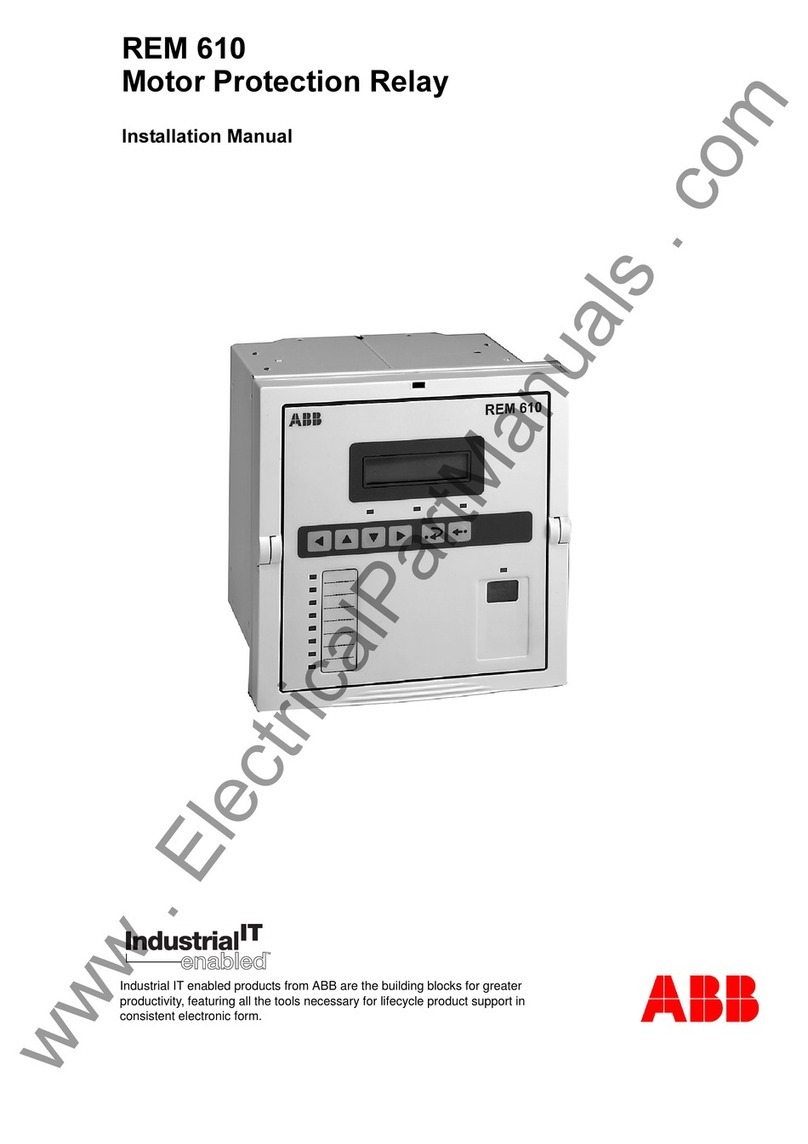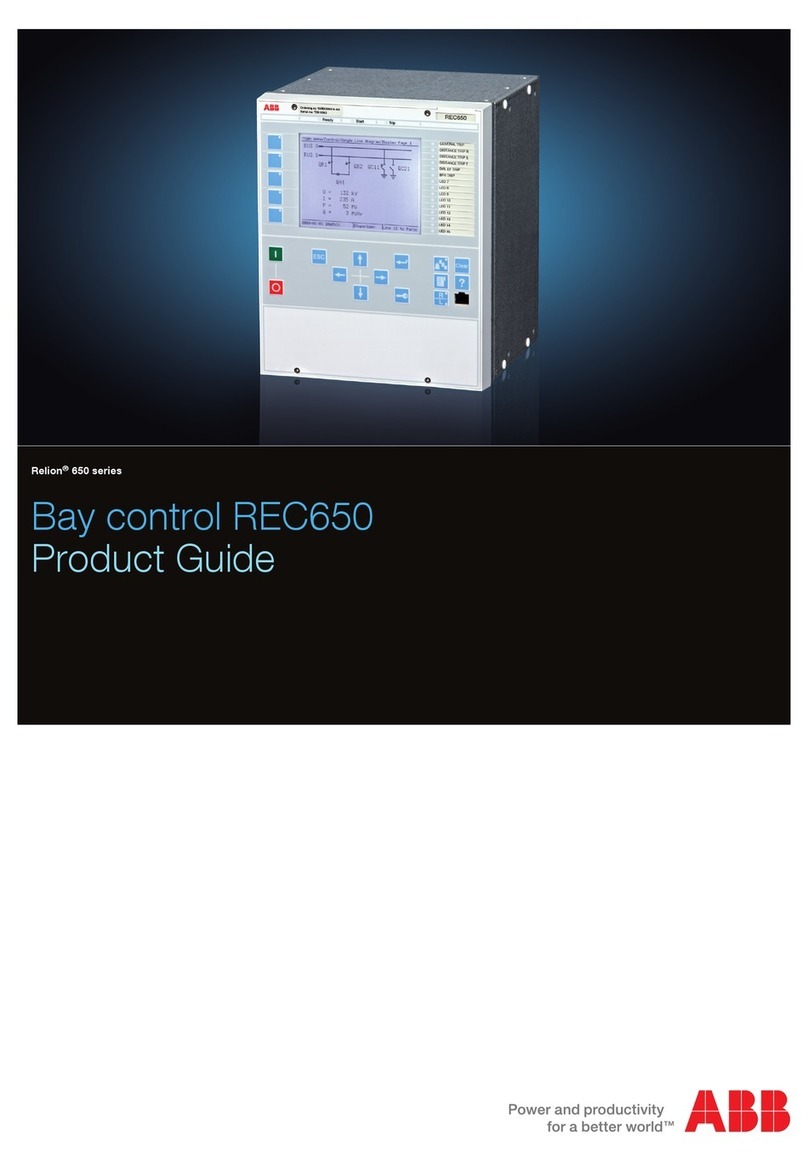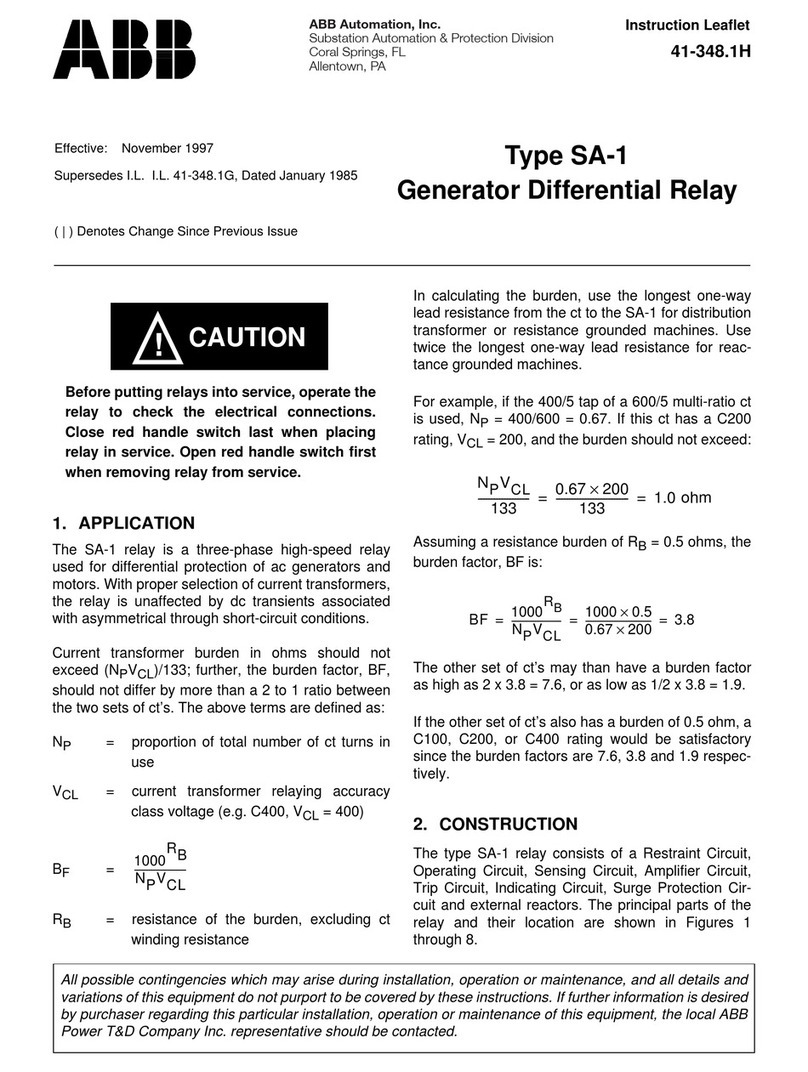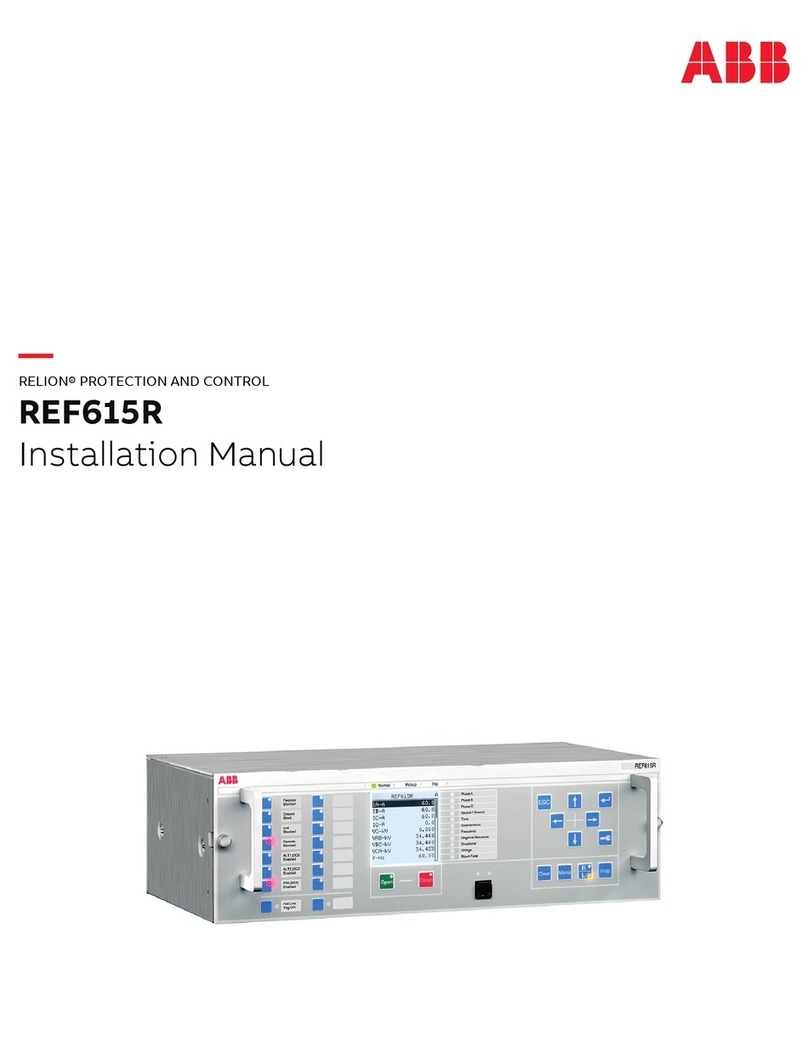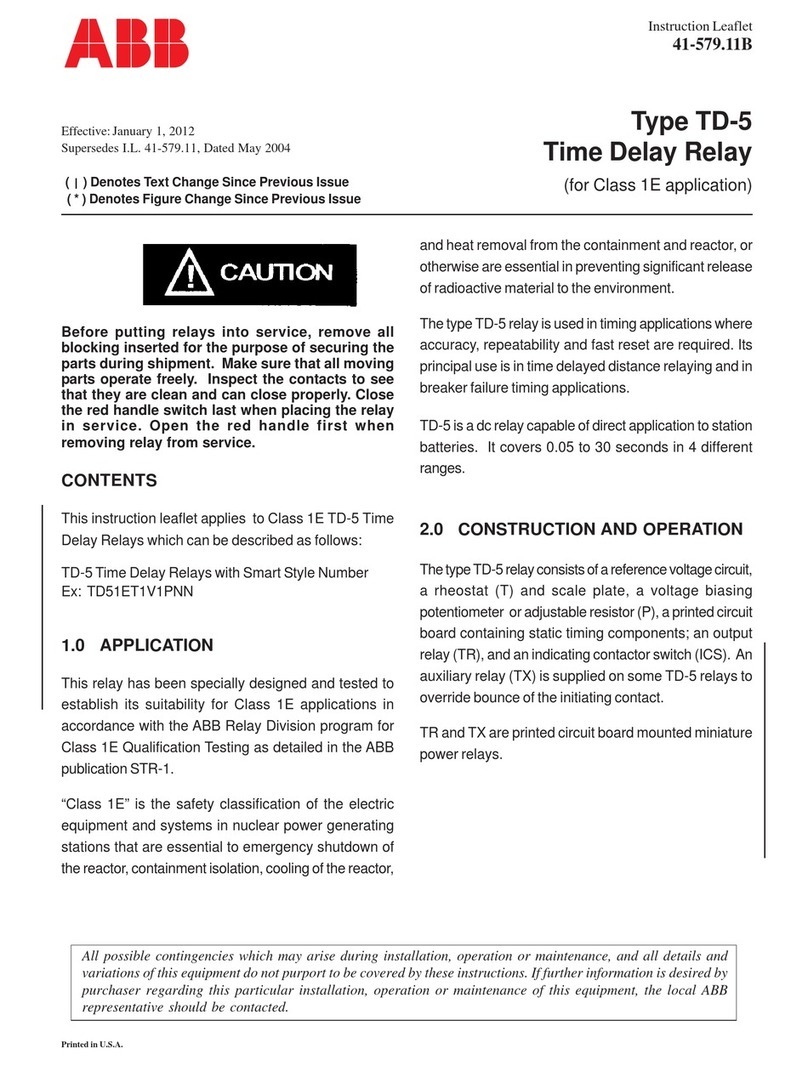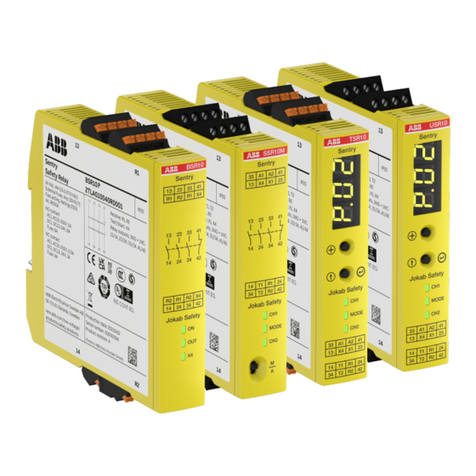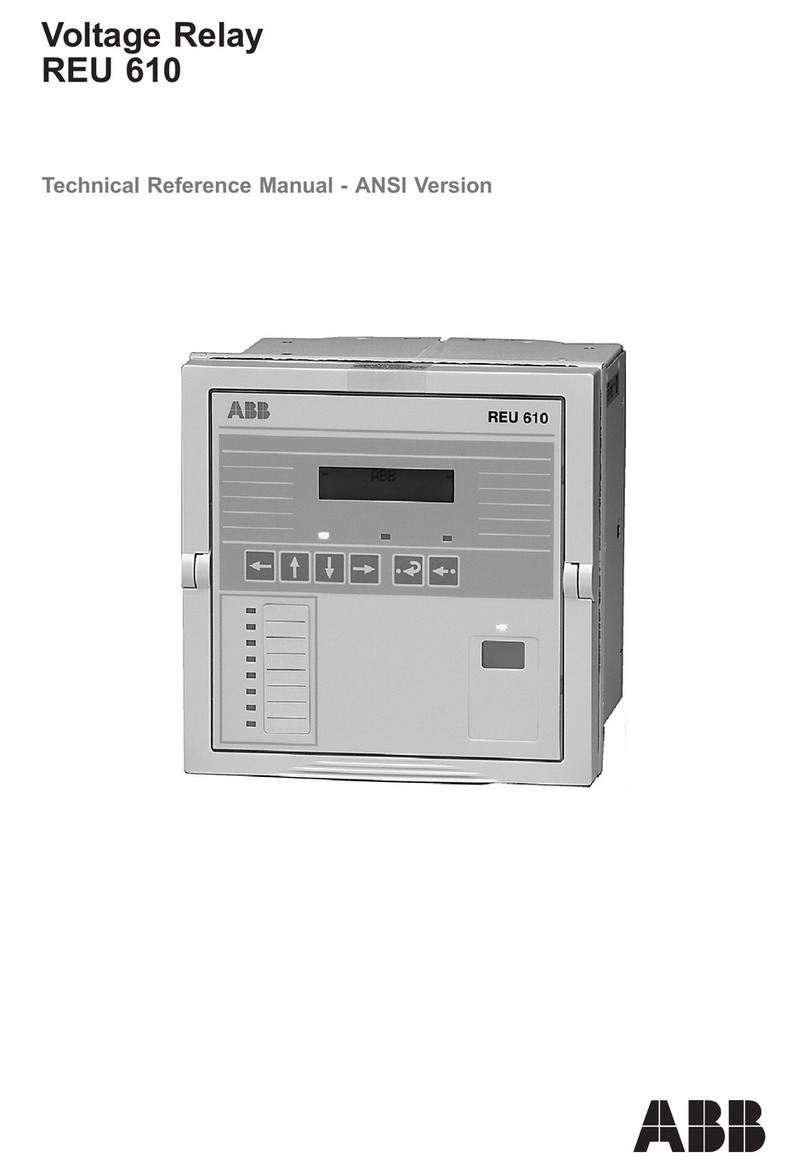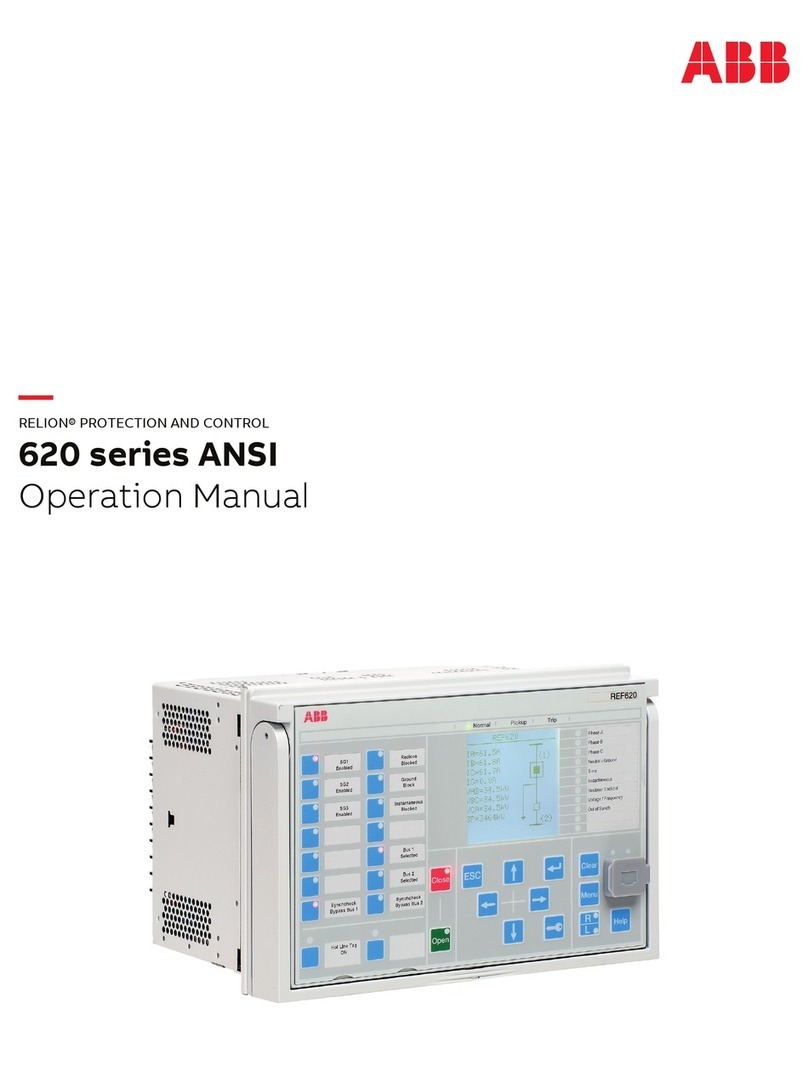ABB CRN-1 Manual
Other ABB Relay manuals

ABB
ABB OREL-01 User manual

ABB
ABB CT-S Series User manual

ABB
ABB CM-SRS.11 User manual

ABB
ABB RED670 Relion 670 series Quick start guide

ABB
ABB Relion 615 series Instructions for use

ABB
ABB SPAJ 111 C User manual

ABB
ABB RELION 650 SERIES User manual

ABB
ABB REJ 527 User manual
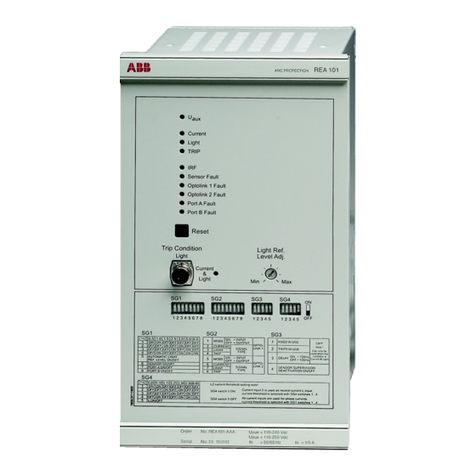
ABB
ABB REA 10 Series User manual

ABB
ABB TF65 User manual



